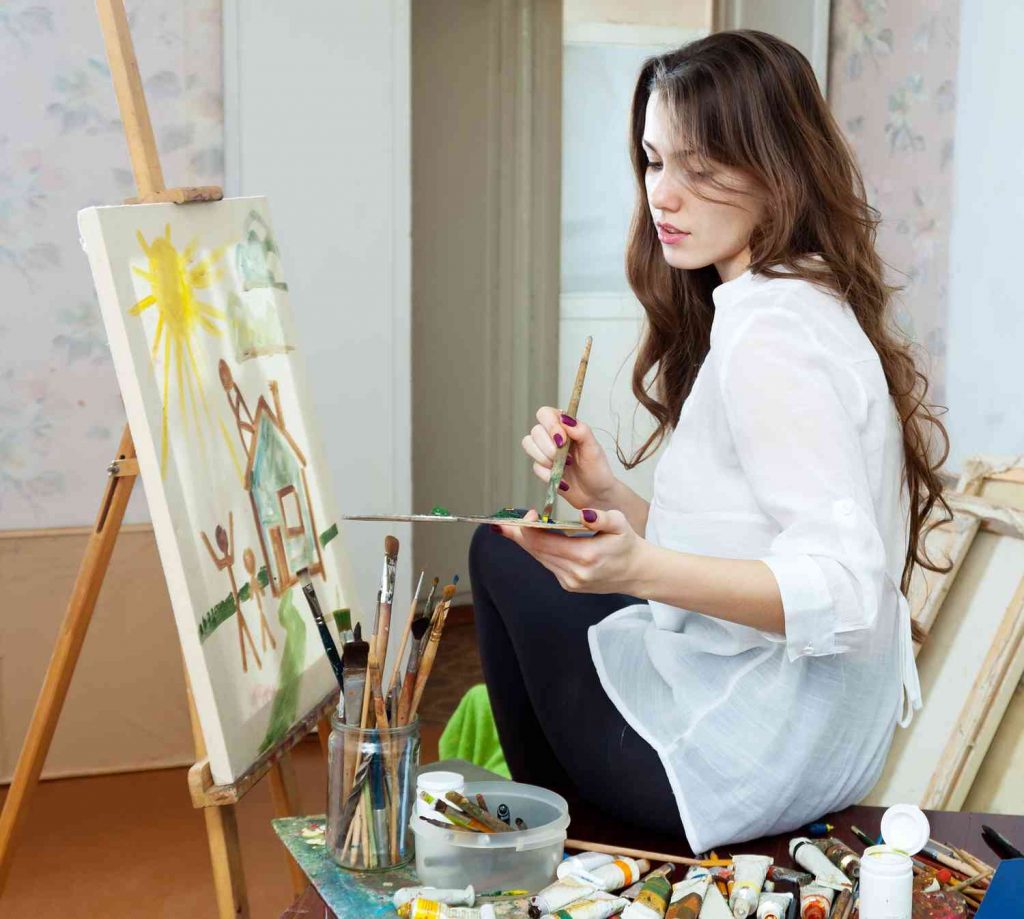
The creative process of creating art is used in art therapy to enhance a person’s physical, mental, and emotional well-being. Art therapy can be used as a complementary treatment to traditional talk therapy, or it can be used as a standalone treatment for a variety of mental health conditions.
Art therapy can be helpful in mental health treatment in several ways:
1. Self-expression: Art therapy allows individuals to express their emotions and experiences through creative expression, even if they have difficulty putting their feelings into words.
2. Stress reduction: Engaging in artmaking can be a relaxing and calming activity, helping to reduce stress and anxiety.
3. Emotional regulation: Art therapy can help individuals learn to regulate their emotions and manage difficult feelings.
4. Self-awareness: Creating art can provide insights into a person’s thoughts, feelings, and behaviors, helping them to develop greater self-awareness.
5. Social connection: Art therapy can be a social activity, fostering connections with others and promoting feelings of belonging and community.
6. Trauma processing: Art therapy can be a helpful tool for processing trauma and addressing the complex emotions that can arise from traumatic experiences.
Art therapy can be used to treat a range of mental health conditions, including depression, anxiety, post-traumatic stress disorder (PTSD), and addiction. It can be especially useful for individuals who have difficulty expressing their emotions verbally or who have experienced trauma.
Art therapy can be a valuable tool in mental health treatment, helping individuals to improve their emotional and psychological well-being through creative expression and self-discovery.
What are some examples of Art Therapy Techniques?
There are many techniques used in art therapy, and the specific techniques used may vary depending on the individual’s needs and goals. Here are some examples of art therapy techniques:
1. Free drawing or painting: This technique involves creating art without any specific direction or guidelines, allowing the individual to freely express their emotions and experiences.
2. Guided imagery: This technique involves using visualizations to help the individual imagine a safe place or explore their emotions in a guided way.
3. Collage: This technique involves creating a visual representation of the individual’s thoughts, feelings, and experiences using images cut from magazines or other sources.
4. Sculpture: This technique involves using various materials to create a three-dimensional representation of the individual’s emotions and experiences.
5. Mandala creation: This technique involves creating a circular design that can serve as a tool for meditation and self-reflection.
6. Art journaling: This technique involves using a journal to create art and record thoughts and feelings.
7. Group projects: This technique involves creating art collaboratively with others, fostering social connection and a sense of community.
These techniques can be used in a variety of settings, including individual therapy, group therapy, and community-based programs. The art therapist will work with the individual to determine which techniques will be most effective in addressing their specific needs and goals.
What are some common goals of art therapy?
The goals of art therapy can vary depending on the individual’s needs and circumstances, but some common goals of art therapy include:
1. Self-expression: Art therapy can help individuals express their emotions and experiences in a safe and supportive environment.
2. Emotional regulation: Art therapy can help individuals learn to manage difficult emotions and regulate their moods.
3. Self-awareness: Art therapy can help individuals gain insight and self-awareness into their thoughts, feelings, and behaviors.
4. Coping skills: Art therapy can help individuals learn new coping skills and strategies for managing stress, anxiety, and depression.
5. Communication: Art therapy can help individuals develop better communication skills and enhance their ability to express themselves.
6. Socialization: Art therapy can help individuals improve their social skills and build connections with others.
7. Trauma processing: Art therapy can be a helpful tool for processing trauma and addressing the complex emotions that can arise from traumatic experiences.
Overall, the goals of art therapy are to promote emotional healing and personal growth, improve mental health and well-being, and enhance the individual’s quality of life. Art therapy can be used as a complementary treatment to traditional talk therapy, or it can be used as a standalone treatment for a variety of mental health conditions.
Benefit of arts therapy
Art therapy can provide many benefits for individuals seeking mental health treatment. Here are a few possible advantages of art therapy:
1. Improved emotional regulation: Art therapy can help individuals learn to identify and manage difficult emotions, improving their ability to regulate their moods and feelings.
2. Enhanced self-awareness: Art therapy can help individuals gain insight into their thoughts, feelings, and behaviors, increasing their self-awareness and self-understanding.
3. Reduced stress and anxiety: Engaging in artmaking can be a relaxing and calming activity, helping to reduce stress and anxiety.
4. Improved communication skills: Art therapy can help individuals develop better communication skills and increase their ability to express themselves.
5. Increased socialization: Art therapy can be a social activity, fostering connections with others and promoting feelings of belonging and community.
6. Trauma processing: Art therapy can be a helpful tool for processing trauma and addressing the complex emotions that can arise from traumatic experiences.
7. Increased self-esteem and confidence: Art therapy can help individuals develop a sense of accomplishment and self-efficacy, improving their self-esteem and confidence.
Conclusion
Art therapy can be used to treat a range of mental health conditions, including depression, anxiety, post-traumatic stress disorder (PTSD), and addiction. It can be especially useful for individuals who have difficulty expressing their emotions verbally or who have experienced trauma. Overall, art therapy can be a valuable tool in mental health treatment, helping individuals to improve their emotional and psychological well-being through creative expression and self-discovery.
With TalktoAngel, you can find the top online resources for mental health professionals. Use this search engine to do a search. “online counseling “or online counselor.